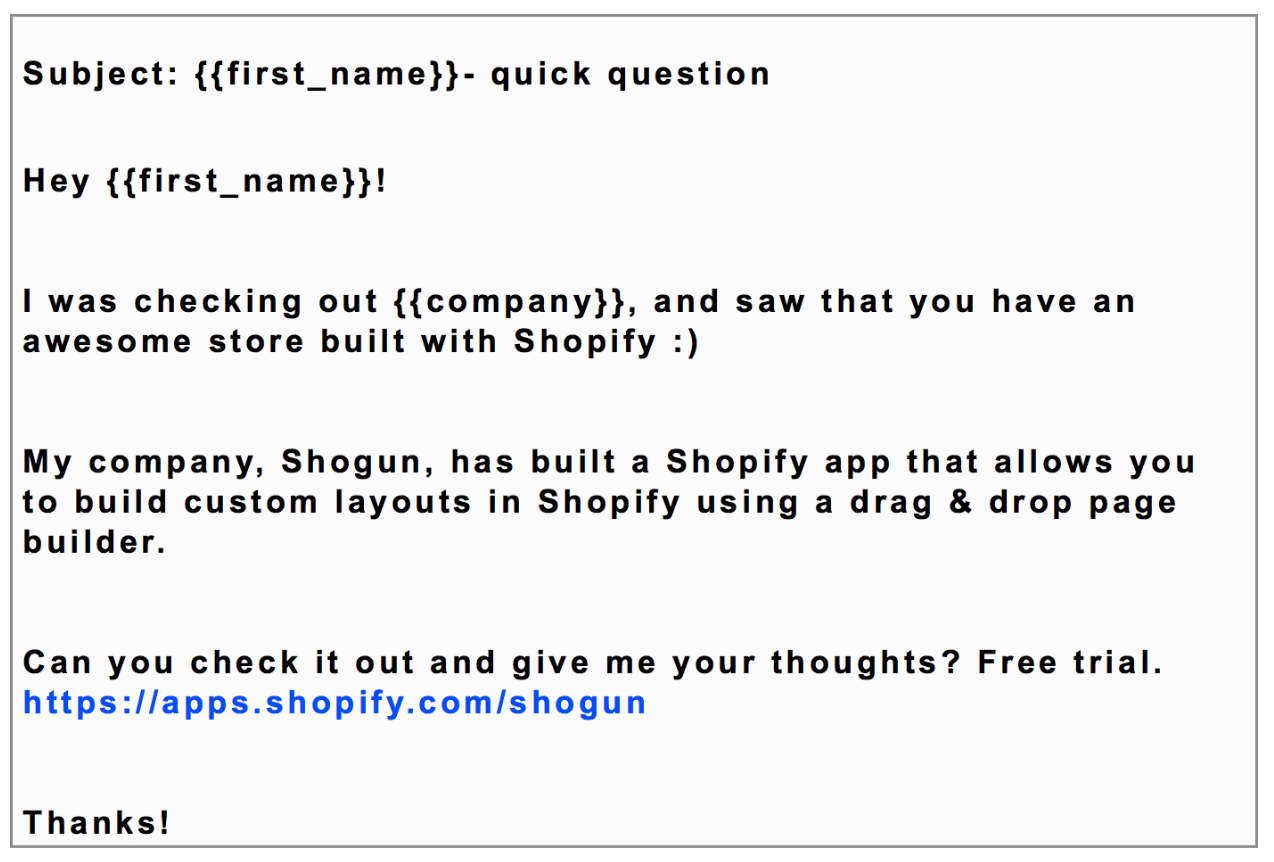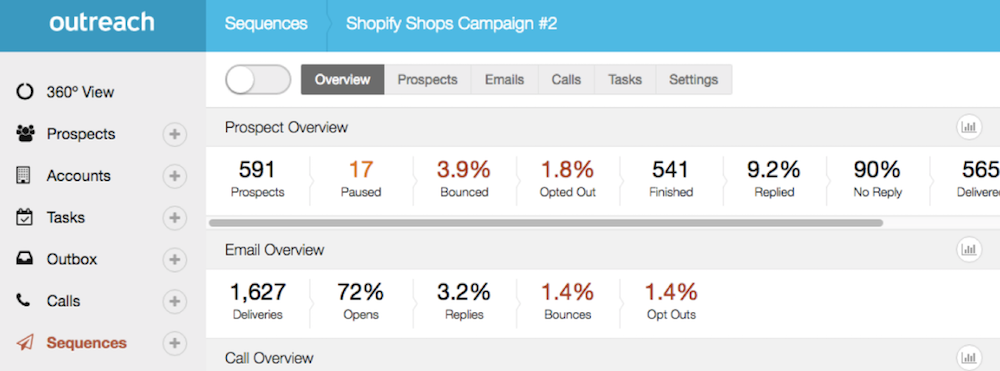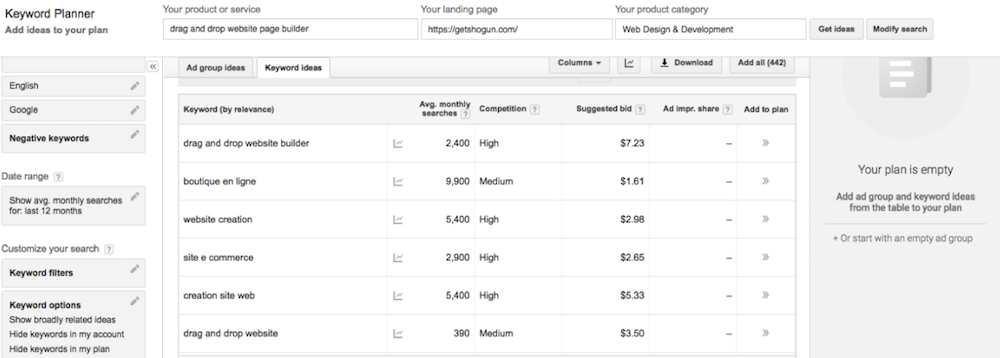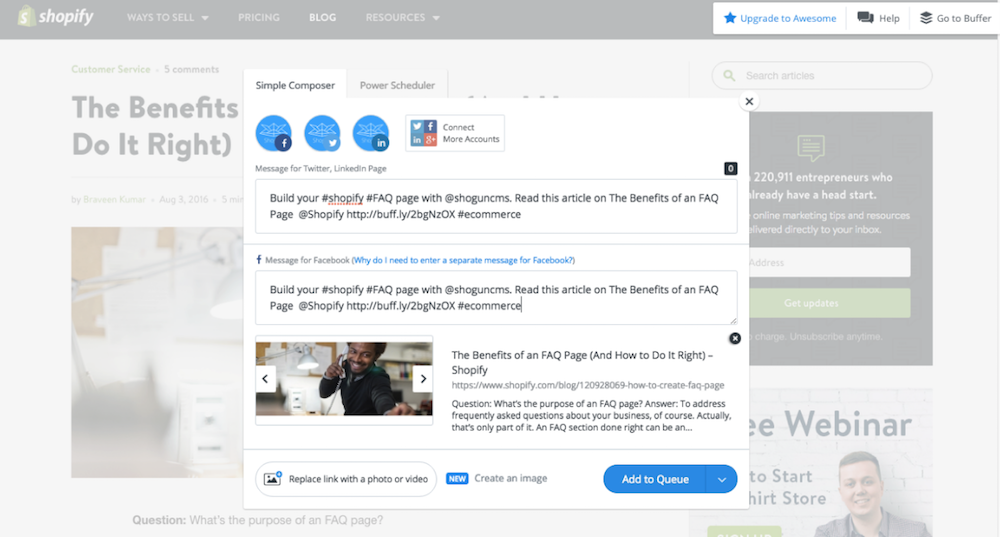How to Acquire Initial Clients for your B2B Startup
“A startup is a company designed to grow fast...The only essential thing is growth. Everything else we associate with startups follows from growth.”
Words to live by from one of Paul Graham’s Essays.
The process for gaining your first few clients isn’t so intuitive when you have a product that is less than a week old, and a bank account that’s at least several zeros lower than that of Salesforce.com. In this article, we’ll explore some low cost ways to market and sell to users for B2B startups.

Famous words from the suave salesman … Alec Baldwin.
When you’re working on a B2B startup, you want to get paying clients ASAP. Initially, the revenue is more based on principle than profit (solidifies market validation), but it’s good to get to “Ramen Profitability” (enough profit to support you and your cofounder living in basement and eating microwave instant noodles for dinner) as quickly as possible. Moreover, gaining clients is going to get you serious feedback about your product immediately.
Let’s assume that you’ve thoroughly exhausted your personal LinkedIn rolodex, and need some fresh ideas. Here are some of the early days tactics I recommend for B2B startups:
- Cold Email Outreach
- Content Creation
- Social Media
- Partnerships/Affiliate Marketing/Marketplaces
- Paid Advertising
In this article, we’ll explore starting points for each of these potential acquisition strategies.
Cold Email Outreach
People don’t really cold call anymore, and business events are expensive. Email is free and people check email on their phones all day, so SPAM is actually a great way to get conversations started in the early days. Some politically correct people like to call this “Cold Email Outreach” to make themselves feel better. So we’ll just call it that.
The key to good “Cold Email Outreach” is not to come across as SPAM. Instead of trying to push a product or send a marketing message, keep the emails short and ask for help. Also, make sure you’re emailing the right person. With that in mind, here is the the process for Cold Email Outreach:
- Scrape lists of companies off the web (from publications, organization/association websites with listings, Google search, etc.) You can do this with tools like Import.io or Chrome extensions like Data Miner, or (if you’re technical) out of the box scrapers like Nokogiri.
- Create a list of all possible “title targets” for the title of the position the person that you want to reach (i.e. VP, Marketing, Marketing Manager, etc.). Keep in mind you may want to contact people above or below them to get in touch. Put all the info in a Google Doc.
- Provide the list of companies and title targets to a Virtual Assistant (VA) through a service platform like UpWork. You’re looking for a “Lead Generation Specialist” from the Philippines.
- Give the VA an email finder tool like SellHack or Toofr so they can get you the person’s First Name, Last Name, Title, and Email Address from their LinkedIn profile. Have the VA organize the data in a Google Sheet.
- Clean the data with a tool like Kickbox to eliminate any bad emails. This will lower the bounce rate of your emails.
- Create sequenced email marketing campaigns in email outreach/automated marketing software like Outreach.io or PersistIQ.

Precious leads: the finished product from your scraping and data mining.
At this point, you’ve got the process to get the contacts, you have the tools that you need. But the content of your emails will determine the success of your campaigns.
First, no one is going to read your email if the subject line looks like SPAM. Keep it personal, short, and non promotional. The subject line “{first name} - quick question” generally yields a 90%+ Open Rate after 3 touches (3 emails).
Email content should be extremely brief: 2-3 sentences. Avoid formal language and business buzzwords. I have found that informal language and emoji can convince the person that you’re human being and not automated marketing software ;)

Informal, short & sweet, and clear about the action you want them to take.
The goal of the email is not to sell your product or your idea; generally people don’t care what you’re pitching. The goal is to get them to click, or to get them on the phone. Emails should be composed with this goal in mind.
Personally, I find that taking the “product research” or “feedback” angle works pretty well. Gets people on the phone or clicking the link, and honestly, you should be just as happy getting feedback as getting sales. With this in mind, here is content for a potential sequence 3 email sequence:
- Hey {first name} - saw you are {title} at {company} and thought you could help me with feedback on my product. I’m building a tool to help project managers track employee and contractor time, and I want to talk to a few PM’s. Do you have 10 min for a few questions?
- Hey {first name} - just wanted to follow up here :)
- Hey {first name} - last email I promise. I’m not trying to sell anything, just looking to get an expert's opinion on features for my tool, and thought that you could provide insight from your PM experience. Do you have any time this week after 2:00p PST?
Depending on who you’re contacting at the company, sometimes a referral strategy works best. This is usually done with a “Top Down” approach; figure out who your title target might report to, email them something like:
“Hey {first name}- I’m looking to get in touch with the Project Manager on your team who manages time tracking of all employees. Can you point me in the right direction?”
The manager will likely reply with the Project Manager cc’d, and the Project Manager would usually respond, because the email appears as instruction from their superior.
Regardless of your strategy, AB test your messaging to see what happens to your Response Rate and CTR. Try to get your RR above 10% and your CTR above 20%. Tools like Outreach.io or PersistIQ will help you track all these metrics.

9% response rate on a list of 591 is 53 new conversations with prospects :)
**Word to the wise: Keep it under 300 emails per day and check your email/domain health using tools like MxToolbox to ensure you’re not getting flagged as a spammer.
Content Creation
Content creation is important, as it will become the backbone of many of your marketing campaigns, and work to improve your site’s search ranking (SEO). I could probably write a whole separate post on content creation, but let’s start simple with a plan for written content:
- Brainstorm topics that would be useful or interesting to your users.
- Think of how that content intersects with your product.
- Write down the search terms that your users would search to find this info.
- Use Google’s Keyword Planner to find the best keywords.
- Cross reference with Google Trends to find new terms that are gaining popularity.
- Create a content plan of articles on helpful topics using the best keywords.

Google Keyword Planner, super useful tool
When you write, don’t be too promotional about your product. Think about framing your content in the context of Best Practices, Case Studies, Expert Opinions, “How To” Guides, or Product Reviews/Comparisons. Of course, you will be angling for your own product, but try not to come across as distastefully biased.
Make sure to use lots of pictures or other visuals to break up the text, try to write guides that convey information in bulleted or numbered lists, and keep it under 2,000 words, if you can.
This content will feed your other marketing campaigns and initiatives. Here are some examples of where to use it.
- Your website blog
- Social Media
- Guest blog for a partner company that has a bigger audience than you.
- Newsletter campaigns
- Forums: Reddit, Quora, etc. (answer your own question)
- Email Outreach campaigns
- Press Kits
Social Media
At a basic level, it’s good to set up your social channels when you start your company. It will add legitimacy to your brand, and provide your clients with additional channels to get in touch with you. Facebook, Twitter, and Linkedin are essentials for pretty much all businesses these days.
You can manage your social media through Buffer, which allows you to auto post across all your channels, optimizes and automates your posting times, and provides you with analytics for your posts. Here’s how to get set up with a base layer of content on Buffer.
- Set up your Twitter, LinkedIn, and Facebook accounts, and sync them with Buffer.
- Install the Buffer Chrome extension.
- Use Google Alerts to discover articles and news related to your industry.
- As you read articles, compose a 140 character post that says something useful.
- Add it to your Buffer queue to auto post to your social channels.

Buffer’s Chrome Extension makes social media management more manageable. Pun intended.
Use social media channels to engage with clients, partners, and experts in your industry. A lot of companies are trying “social sales development” strategies, which relies more on proactively following, commenting, and direct messaging business contacts on LinkedIn and Twitter. Try implementing a social strategy as a part of your cold outreach efforts.
Also engage with social communities like LinkedIn Groups (good place to post comments in “Conversations”), professional Sub-Reddits (i.e. r/eCommerce, r/cms, r/webdev, etc.), and Quora to engage in discussion with your peers and prospective clients. If you barrel into the community promoting your product, you’re likely to get reported, so make sure to be tactful.
Partnerships, Affiliate Marketing, and Marketplaces
Partnerships can be a great way to get early sales while your product and reputation is still growing. Start by asking yourself a few questions to identify potential partners, and how you can incentivize them:
-What products/companies exist in your space that have similar client bases, but are non-competitive?
-Is there a group of professionals (i.e. marketers, developers, designers, data analysts) that would find your product particularly useful and advocate for your product?
-Are their agencies or other resellers of products and services that have clients who would benefit from your product?
-What can you offer as a partner?
- Would your product drive more engagement for them?
- Is your client base valuable?
- Can you offer commissions on sales?
- Does your website or blog get a lot of traffic?
Partnerships can take many forms, but you can explore these opportunities/initiatives:
- Software integrations - make your complementary products play well together.
- Cross-promotion - market each other’s companies to your respective clients/mailing lists.
- Collaboration on custom projects - team up to tackle custom project work for a big client.
- Guest blogging - write blog posts for each other to gain visibility across readership.
- White labeling software - allow each other to sell each other’s products under your respective brands.
- Affiliate marketing - set up an incentive program for selling each other’s product.
When it comes to affiliate marketing, you will want to find a deal that makes sense for both parties. If you’re offering too little, affiliates will not be incentivized to promote your product, and your program won’t work. If you offer too much, you’ll kill your CAC (Cost of Customer Acquisition) and have to wait to see if your future revenues actually provide for a sustainable business model.
- One time payout: A lump sum of money is paid to the affiliate per conversion.
- Recurring: If you have a subscription plan with your client, you pass a percentage of the monthly or annual subscription along to the affiliate for a period of time.
- Initial payout and recurring: A combination of the two aforementioned.
If affiliate marketing is a viable strategy for your startup (and it isn’t for everyone, especially early on), it’s important to specify very clear terms with your affiliates, and track deals using software like Tapfiliate. In terms of finding and contacting prospective partners and affiliate marketers; you can use the same data mining and cold email outreach tactics that you would use to find prospective clients, and change the messaging.
It’s also worth researching and considering B2B App Marketplaces where you could make your product available to an existing base of users. Platforms like marketplaces are a double edged sword, as you don't fully own your users with some platforms, and they usually require a bit of technical work for a proper integration. However, they can be really helpful for getting initial users, and sometimes the a marketplace strategy is the best viable end strategy for a product.
Here are a few B2B marketplaces to consider:
- Chrome Web Store
- Salesforce AppExchange
- Google Apps Marketplace
- Microsoft Office Store
- Shopify App Store
- Box App Store
- Yammer App Directory
- Evernote App Center
Even if your whole product isn’t viable for a marketplace, consider if one of your features could be turned into a mini app or extension that is useful. Clients can be “teased” into your software with a free app. When considering a marketplace partnership, review the terms, as some marketplaces take revenue share.
Paid Channels
Generic startup advice, but in my opinion, jumping right into paid marketing and advertising channels for B2B products isn’t the best strategy. You can spend a lot of money on ads very quickly, and at this stage you’re probably still “bootstrapping” or working with very limited angel money.
However, it doesn’t hurt to test a few channels to see where your prospective clients could be reached once you have some ad dollars to spend.
Google AdWords: Most people are familiar with paid search and CPC (Cost Per Click) advertising, so I won’t go into detail. Use the search terms and keywords from the Google Keywords Planner in the aforementioned “Content Creation” section to put together a campaign. Start off with $100 spend, and see what kind of results that yields. Google Adwords is pretty extensive, and Google has lots of documentation and tutorials for How Google AdWords Works.
LinkedIn Ads: The B2B cousin of Facebook self service targeted ads, LinkedIn Ads are very similar, except with B2B parameters. You can target based on company size, industry, job title, job function, job seniority, skills, etc. LinkedIn will supply you with some JavaScript code help directly measure conversion. You can choose between CPC and CPM (Cost per impression) budgeting, and Text Ad or Sponsored Content promotion.

LinkedIn Ads. Test it out and see if it it works for your audience, and brings you ROI.
Reddit Advertising: If you know that your product has users hanging out on Reddit, you can try identifying those Sub-Reddits and paying for promoted posts. You can have your promoted post link directly to your product website, or to some sponsored content, like a relevant promotional blog post. Budgeting for Reddit is CPM (Cost per impression).
When it comes to user acquisition, there is no “one size fits alls” strategy or formula; you need to figure out where your clients are, and their preferred channels for communication. The aforementioned channels are simply suggestions, and it will be up to you to test the channels, and see what yields results in terms of conversion.
To do this, you will need to have an understanding of web and mobile analytics to see where your conversion funnels succeed and fail. Analytics will also help you understand your user behavior, so you can gain insight into what they like and what they don’t like about your product. For these reasons, the next post in this series will focus on How to Use Web and Mobile Analytics.
ลงทะเบียนเข้าสู่ระบบ เพื่ออ่านบทความฟรีไม่จำกัด







